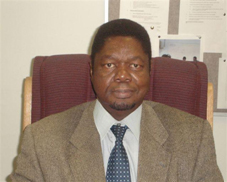The Third IASTED African Conference on
Power and Energy Systems
AfricaPES 2010
Science and Technology Applications for Health and Sustainable Development
September 6 – 8, 2010
Gaborone, Botswana
INVITED SPEAKER
Non-conventional Substation and Distribution System for Rural Electrification
Abstract
In rural areas the concentration of users is low and costs related to deploying a conventional substation are prohibitive. As a result, in many cases a power utility will not be able to generate an adequate return on the large investment necessary to bring a conventional distribution substation on line. On the other hand, rural users are typically satisfied with a lower quality of service and are willing to suffer some power outages if this means they will have access to electrical power at a reasonable price. Additionally, high voltage transmission lines on their path from power source to major urban centers typically traverse many rural areas to which they do not supply electricity.In order to address the drawbacks associated with prohibitive costs of a conventional substation, a relatively small non conventional substation which can be located close to or underneath extra high voltage transmission lines is investigated. These non-conventional substations tap directly into the over head transmission lines using tapping through high voltage connectors as known in the art and do not otherwise interrupt the flow of power along the transmission line. Additionally, as the non-conventional substations provide a single transformer, no bus bars are needed for interconnection of switches. Also, only a single disconnect switch and circuit breaker is required. As a simple and cheaper alternative the circuit breaker can be replaced by a disconnect switch (or a load break switch) and set of fuses, significantly reducing the amount of equipment necessary to ensure operation of the non-conventional substation Single Wire Earth Return (SWER) is a single-wire transmission line for supplying single-phase electrical power to rural sparsely populated areas. SWER systems are mainly used in rural electrification but can also be used in larger isolated loads such as water pumping. A combination of non conventional substation and single wire earth return could be applied for rural electrification.
Biography of the Invited Speaker

Professor George O. Anderson is the Founding Dean of the Faculty of Engineering and Technology, Immediate-Past Head of the Department of Electrical Engineering, Associate Editor of the International Journal of Power and Energy Systems, Interim Chairman of the Botswana Section of the IEEE and Resource Person for evaluation of Research Projects in Power and Energy Systems for funding by the South African National Research Foundation (NRF). Professor Anderson has written two books and has to his credit more than hundred publications in international journals and international conference proceedings.
Prof. Anderson's research interests are in the areas of Power System Stability, Power systems economics Power Quality and renewable energy.










